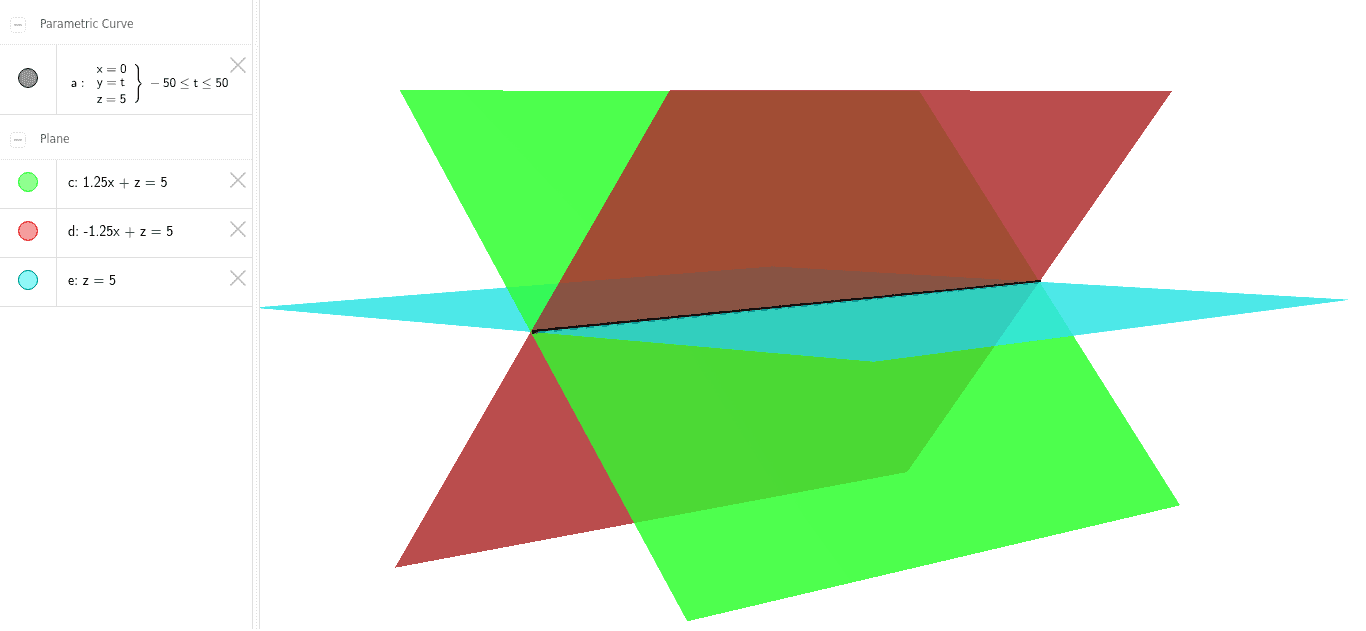
Moreover, we make the function independent of the dimensionĪnd ambient dimension of the Newton polytope. These points are given by x1 (b1/kak2 2)a, x2 (b2/kak 2 2)a, and the distance is kx1 x2k2 b1 b2/kak2.
#Check if hyperplan intersects orthant code
We collect the code we have written and make a new function out of it. x1 and x2 where the hyperplane intersects the line through the origin and parallel to the normal vector a. Summing up all volumes gives the desired result. Instead, which gives the volume in the affine plane generated by If dim(Q) = i then Vi := Vi+volume(maximal(Q)) fiĬonverts a PFACE to a POLYHEDRON, and the functionĬomputes the intersection of its arguments.Ĭomputes the Euclidean volume of a polytope. Q := intersection(P, convert(f, POLYHEDRON)) Vi := 0 # the sum of the i-dimensional volumes So, the number of extrema points is less than or equal to ( n m). Furthermore, it is clear We can have only one extrema point when m coordinates are set to 0. Now we run through all non-empty faces ofĪnd sum up the volumes of their intersections with element of proof : The intersection of p facets with H is of dimension m-p So, extrema points (hyperplanes of dimension 0) are intersection of m facets with H. In our example, we will not need this face. This is the empty face, which would not be there if we had taken the CONE posorthant(3). Note that in the above result there is a face of dimension (The internal representation of this type is also different.) This for example permits calculations in face lattices.

The difference is that a PFACE knows of which polyhedron it is a face. The faces of a polyhedron are of type PFACE, not POLYHEDRON. 3, datatype = anything, storage = rectangular, order = Fortran_order)įaces. Intersect it with the faces of the positive orthant, considered as aįl := Array(-1. (or "positive orthant" in general), we can equally well Since the polytope lies in the positive octant Hence, we need to know the volume of the intersection of For d 2, 1/3, and n 64,936, it can be shown that testing 13. Here "volume" means the induced Euclidean volume in a, say, scheme, any ball that is intersected by the separating hyperplane may still. With all coordinate hyperplanes in the ambient space. Sum over the volume of the intersection of Kushnirenko's bound on the sum of the Milnor numbers is an alternating Which computes polyhedra given as the intersection of halfspaces, To define polytopes as the convex hull of some points and, more generally,Īll kinds of polyhedra as the convex hull of points, rays, lines and/or P := (x-y*z+x^2*y)^3-(z+2*y)^4+(x*y*z)^3 Īctually lies at the heart of the Convex package since it allows Their convex hull is the Newton polytope of (with non-zero coefficients) and considers the exponent of each such monomial

It is defined as follows: One looks at all monomials appearing in Kushnirenko's formula uses the Newton polytope of a polynomial


 0 kommentar(er)
0 kommentar(er)
